Evolving understanding of viral dynamics in marine ecosystems (Tues. Jun. 11)
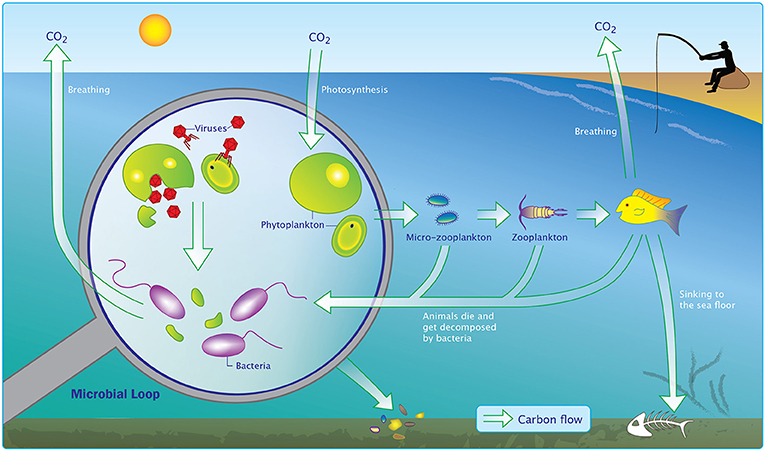
Co-chairs: Jessica Labonté (TAMU-G), Sheri Floge (Wake Forest Univ.), Jeff Bowman (Scripps Inst. Oceanography)
Viruses are an integral component of marine microbial communities, facilitating flux between particulate and dissolved carbon pools. Despite their known prevalence and activity in marine systems, fundamental knowledge gaps prevent the inclusion of viruses in current carbon cycling models. This session will summarize the current state of understanding of key functions and pathways mediated by viruses in marine food webs. Speakers will share ecological insights from virus-host models, ecosystem-wide studies, and explore the role of viral dynamics in carbon transformation and biological carbon export.
Confirmed speakers: Katelyn Smith (Wake Forest Univ.), Jordan Walker (TAMU-Galveston), Cynthia Silveira (Univ. Miami), Kristina Mojica (Univ. Southern Mississippi), David Talmy (Univ. Tennessee, Knoxville), and Daniel Muratore (Santa Fe Inst.).
Marine Virus Webinar Mini-Series Before OCB2024
MAY 8 - watch the recording - SPEAKERS: Rui Zhang (Shenzhen University), Flora Vincent (European Molecular Biology Laboratory)
MAY 20 - watch the recording - SPEAKERS: Debbie Lindell (Technion - Israel Institute of Technology), Kim Thamatrakoln (Rutgers Univ.), Marcie Marston (Roger Williams Univ.)
Air sea interactions: Mechanisms and impacts (Mon. June 10)
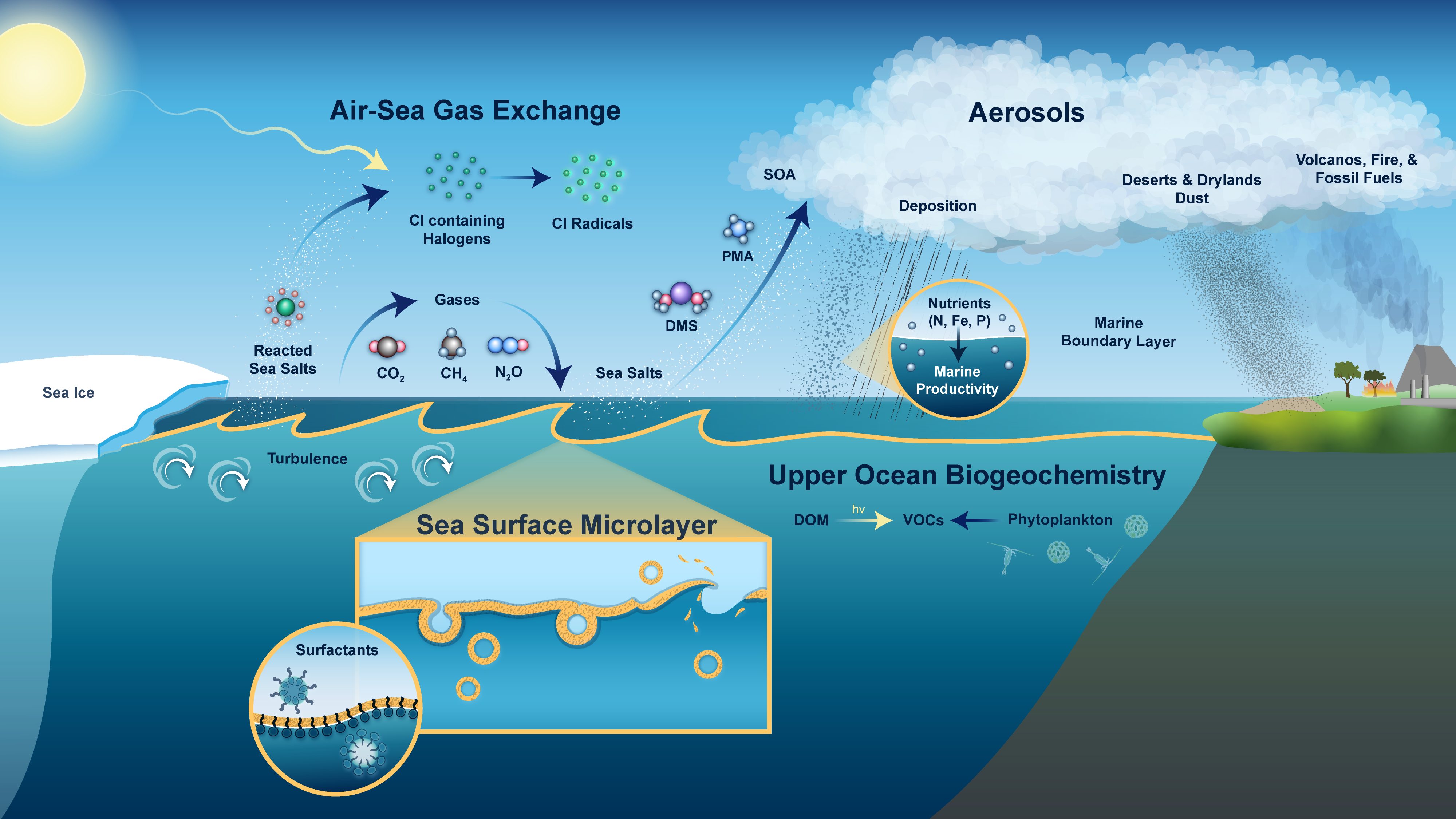
Co-Chairs: Rachel Stanley (Wellesley College), David “Roo” Nicholson (WHOI), Tim DeVries (UCSB)
Fluxes of gas and materials across the air-sea interface are key for understanding biogeochemical budgets in both the ocean and atmosphere. For example, transfer of material from the ocean to the atmosphere via sea spray produces aerosols and at the same time, deposition of dust and other materials from the atmosphere to the ocean provides key nutrients. Fluxes of gases such as CO2, N2O and CH4 show intriguing variability on multiple spatial and temporal scales. Furthermore, new advances have been made in parameterizing gas exchange using wave statistics rather than wind speed when direct flux measurements are not available. All of these materials pass through the sea surface microlayer, which in turn modulates fluxes and impacts chemistry. In this session, air-sea interactions and transfer of gases, aerosols, and more will be discussed, with a focus on processes that affect the biogeochemistry of the ocean or atmosphere.
Confirmed speakers: Luc Deike (Princeton Univ.), Yassir Eddebbar (Scripps Inst. Oceanography), Cara Manning (Univ. Connecticut), Steven Beaupré (Stony Brook Univ.), Kim Prather (Scripps Inst. Oceanography), and Douglas Hamilton (North Carolina State Univ.).
Coupled biogeochemical cycles: Interconnected controls on ocean fertility (Tues. Jun. 11)
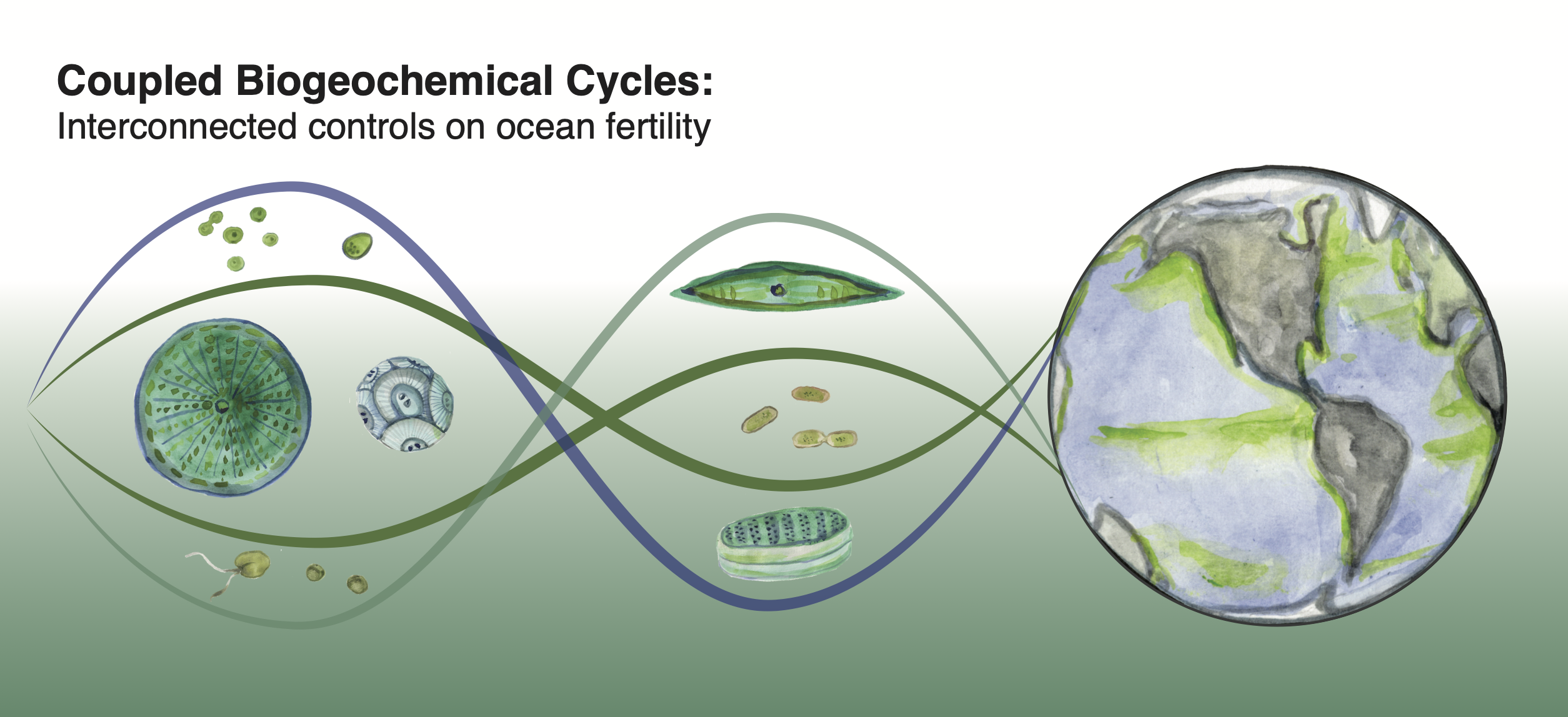
Co-Chairs: Viktoria Steck (WHOI), Dreux Chappell (USF), Randelle Bundy (UW), Kristen Krumhardt (NCAR), Jessica Luo (NOAA/GFDL), Zachary Erickson (NOAA/PMEL)
Global ocean biogeochemical cycles of macro and micronutrients are inextricably linked through their sources and sinks and internal cycling. Numerous recent observations and modeling studies have shown that nutrient cycles in the ocean are intertwined and cannot be viewed as stand-alone systems. This session will bring together researchers studying different macro- and micronutrient cycles to discuss recent findings related to interactions between coupled biogeochemical cycles and their impacts on ocean ecosystems, opening the door to collaborations and encouraging a more comprehensive view of controls on ocean metabolism.
Confirmed speakers: Alessandro Tagliabue (Univ. Liverpool), Robert Letscher (Univ. New Hampshire), Patrick Rafter (Univ. South Florida), Harriet Alexander (WHOI), Nick Hawco (Univ. Hawai'i), and Julia Diaz (Scripps Inst. Oceanography).
Fast processes in the surface ocean and the power of geostationary satellites to resolve them (Thurs. Jun. 13)
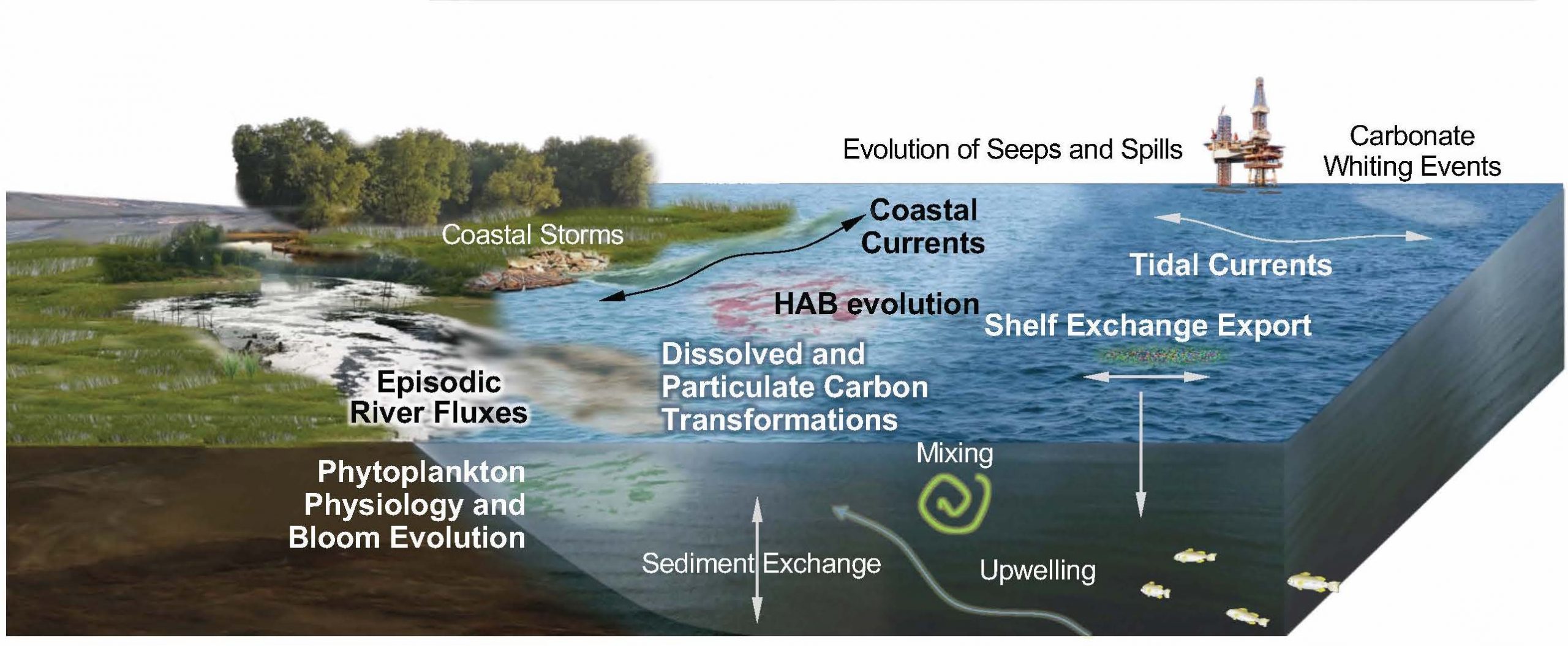
Co-Chairs: Joe Salisbury (UNH), Blake Schaeffer (EPA), Maria Tzortziou (CCNY), Antonio Mannino (NASA GSFC), Melissa Meléndez (Univ. Hawai’i), Susanne Craig (NASA GSFC)
While rapidly evolving features in the atmosphere are well known and affect our everyday lives, less is known about important processes occurring in the surface ocean that evolve over timescales of minutes to days. Such processes include physiological changes in phytoplankton communities, vertical migration of phytoplankton and zooplankton, horizontal and vertical fluxes of land and ocean materials, and a host of other processes occurring at diurnal or semidiurnal tidal frequencies. Historically, observations at these time scales have been problematic: Moored arrays can measure at high frequency, but have little spatial context, and while polar orbiting assets provide broad spatial views, they cannot sense many processes at their native time scales. This session will highlight new geostationary hyperspectral ocean color sensors ideally suited to observe biogeochemical and physical processes in the surface ocean at hourly timescales. Presentations will focus on phytoplankton dynamics, land-ocean interactions, hazards (e.g., oil spill, harmful algal bloom) monitoring, ocean color remote sensing and applications specialists whose research centers on rapidly evolving blooms or hazards.
Confirmed speakers: Joe Salisbury (Univ. New Hampshire), Yayla Sezginer (Univ. British Columbia), Chris Osburn (NCSU), and Adrian Marchetti (UNC Chapel Hill).
The impact of Submarine groundwater discharge on marine biogeochemical cycles (Wed. Jun. 12)
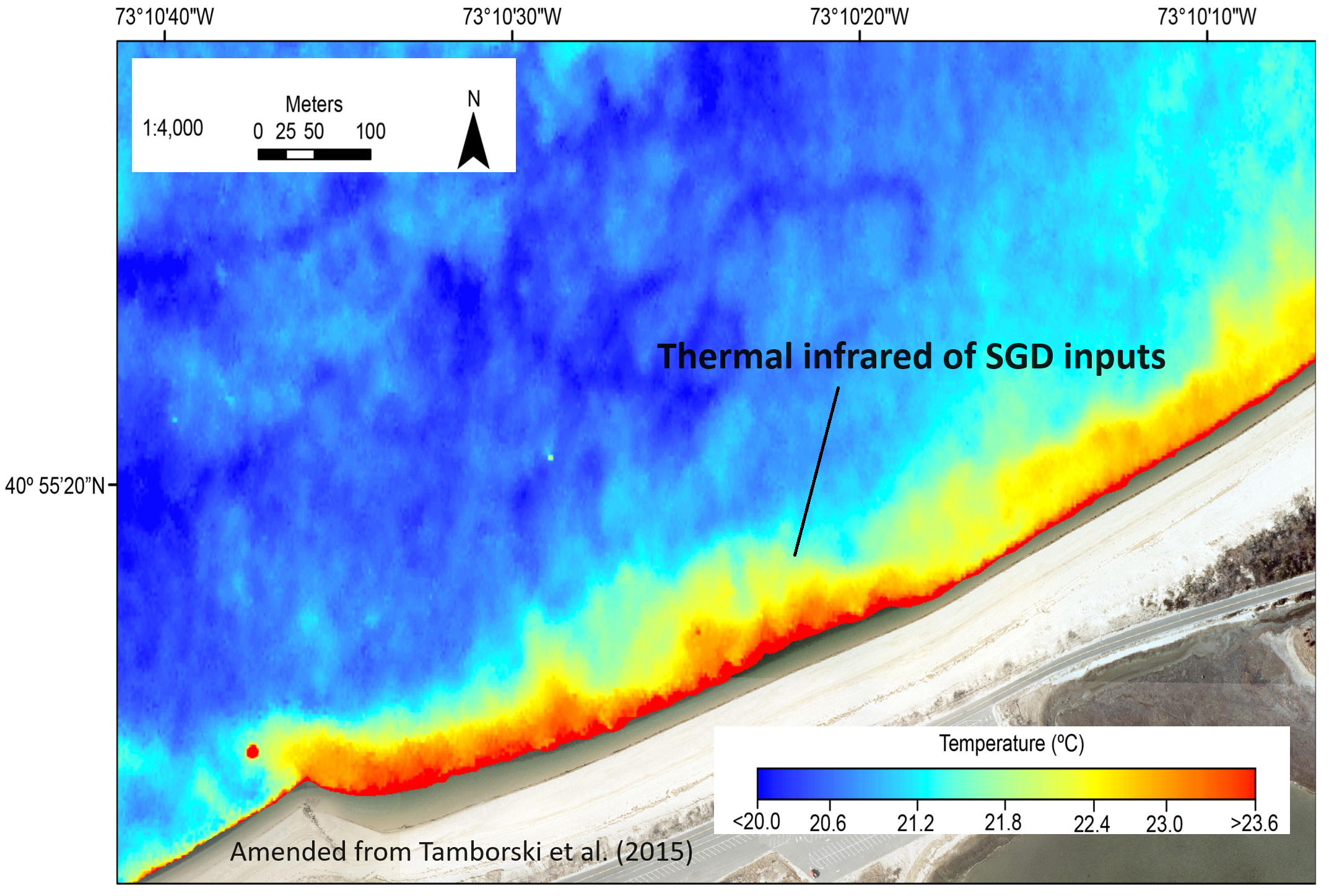
Chairs: Shaily Rahman (UC Boulder), Kanchan Maiti (LSU), Yige Zhang (Texas A&M)
Submarine groundwater discharge (SGD), a hydrologic process whereby fresh and brackish recirculated groundwater travel from land to sea, is an underappreciated and often historically ignored vector that has major implications for marine biogeochemical cycles. Globally, the total volume of SGD from coastal aquifers to the ocean has been estimated as three times the volume of river discharge. With respect to the major nutrients, fluxes from SGD are >50% higher than fluxes from rivers. In this session we will explore the implications of SGD on a regional and global scale, and how this vector may change over time.
Confirmed speakers: Alicia Wilson (USC), Meagan Eagle (USGS), Craig Connolly (EPA), Joseph Tamborski (ODU, virtual), Nils Moosdorf (Kiel University, virtual)



